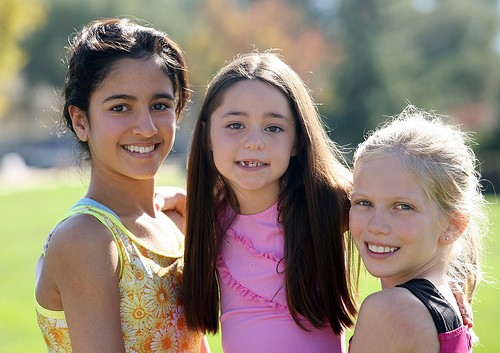Most of the bite problems (malocclusion) in children come out at around the age of 6 when the baby teeth give way to permanent teeth. Occlusion refers to the way the upper and lower teeth fit together. Usually, the front teeth should overlap slightly over the lower teeth. The back teeth (molars and premolars) should fit into the grooves of their opposite teeth without problems. If there are no problems, at around the age of 5 or 6, your baby’s front teeth will begin erupting in the right position.
Sometimes, though, problems occur during teeth eruption leading to malocclusion. A bad bite may occur when baby teeth erupt prematurely. Bite problems may also occur due to prolonged thumb sucking, use of pacifier or tongue thrusting. Tumors of the mouth and misalignment of the jaw also cause bite problems.
As a parent or guardian, you can save your child from developing bite problems if you know what to look for. The following are some of the common bite problems for which you should take your child to an orthodontist for a thorough evaluation.
Excessive spacing

Usually, your baby’s permanent teeth should erupt next to each other without noticeable space. Excessive spacing may occur due to differences in size between the jaw and the teeth, abnormal gum tissue, missing teeth, or unusually small teeth. Spacing problems may cause a host of issues including overexposure of gums, eating, and self-consciousness about an individual’s appearance, especially when smiling.
Underbite or deep bite

Usually, the top teeth should slightly overlap the bottom teeth. But in an underbite or deep bite, the lower teeth sit in front of the upper jaw. If a deep bite is not corrected, it can lead to tooth wear, “bulldog” appearance, and stress on jaw joints.
Open bite

We have two types of open bite problems. The first one is the anterior open bite, which occurs when back teeth are in position, but the front teeth do not overlap. We also have the posterior open bite which occurs when front teeth lock, but the back teeth do not. If not corrected, an open bite can lead to swallowing and possible speech problems.
Crossbites

Crossbite is a type of tooth misalignment that occurs when teeth don’t align with each other as they should. Crossbites can occur due to misalignment of the bone and the teeth. Crossbites can occur on one tooth or a set of teeth. If this dental problem is not corrected in time, it can cause the jaw to shift on one side and wearing out of the teeth.
Abnormal eruptions and misalignments

Protrusions and retrusion are also among the most common bite problems. Protrusions occur when the upper jaw or teeth appear to move too far forward. Retrusions, on the other hand, occurs when the lower jaw or teeth appear to be too far back.
Abnormal eruptions can also occur when a permanent tooth erupts far away from its normal position. Individual’s with this dental problem may have problems closing the mouth comfortably. This can cause drying of oral tissues leading to tooth decay and speech problems.
If you notice any of these bite problems in your child, don’t expect them to get better in the future. In fact, most of the bite problems tend to become worse with time. It is possible to correct most of these bite problems as the child is still growing. So, act today and book an appointment with an orthodontist for a full examination.
If you would like more information on how to deal with bite problems, don’t hesitate to contact Dr. Mizell for a consultation.


